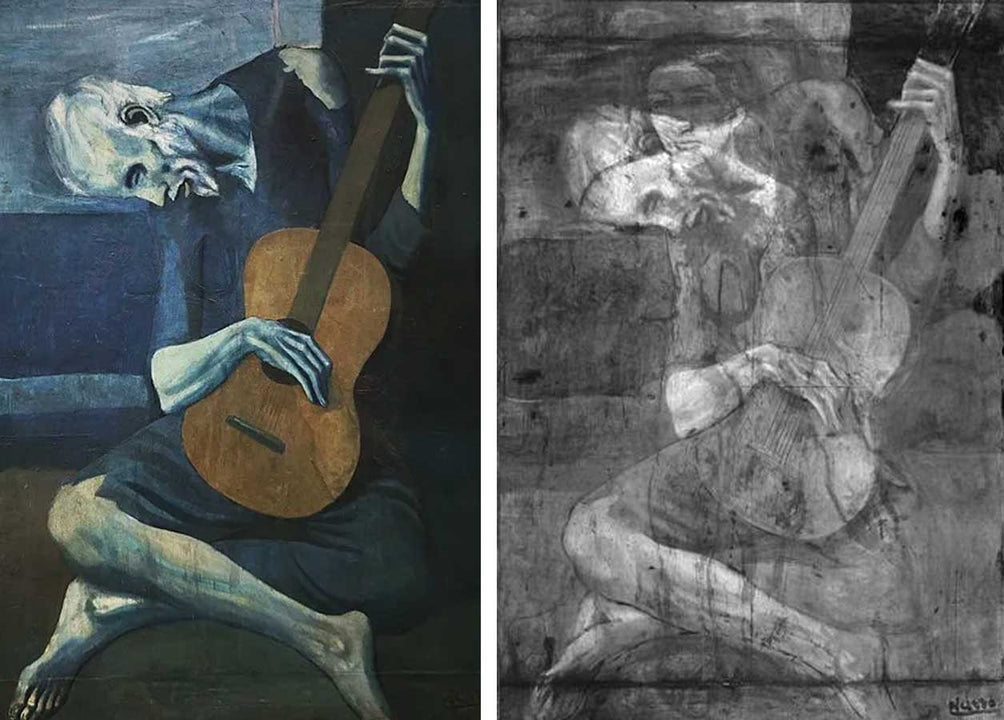
Using advanced X-ray imaging techniques, art historians and scientists have discovered secret paintings hidden beneath the surfaces of some of Picasso’s renowned Blue Period masterpieces.
Picasso's Blue Period, which spanned from 1901 to 1904, is characterised by its somber tones and melancholic subjects, reflecting the artist's own emotional turmoil during these years. The discovery of hidden paintings beneath these works offers a deeper insight into Picasso's creative process and his evolution as an artist.
In a groundbreaking revelation, art experts have found a hidden painting beneath one of Picasso's early masterpieces. Using infrared technology, they discovered a portrait of a bearded man wearing a jacket and bow tie and resting his hand on his cheek underneath Picasso's famous work The Blue Room.
 Picasso's The Blue Room, painted in 1901, and the portrait of a bearded man discovered underneath the painting.
Picasso's The Blue Room, painted in 1901, and the portrait of a bearded man discovered underneath the painting.
Experts believe Picasso could not afford a new canvas when he painted The Blue Room in 1901, leading him to repurpose an earlier work. This discovery sheds light on the practical challenges Picasso faced and his resourceful nature during his early career. The hidden portrait also hints at Picasso's habit of painting over existing works as his ideas evolved.
Similarly, beneath La Misereuse Accroupie (The Crouching Beggar) from 1902, X-rays revealed a hidden landscape scene under the surface. It is not known who painted the original landscape, but Picasso used the curves of the lanscape to form the shape of the woman. And beneath The Old Guitarist, another iconic Blue Period piece, the faint image of a woman was detected.
 Picasso's The Crouching Beggar, painted in 1902, and the landscape image discovered underneath the painting.
Picasso's The Crouching Beggar, painted in 1902, and the landscape image discovered underneath the painting.
The use of X-ray technology in art conservation and historical research has revolutionised our understanding of artistic practices. It sheds light on the layers of history embedded in the canvas, revealing the dynamic and sometimes tumultuous journey of an artist’s hand. In Picasso’s case, these findings underline his financial constraints and the necessity to reuse canvases.
This discovery enriches our appreciation of Picasso’s Blue Period, not just for its visible, emotive beauty but also for the hidden stories and creative processes encapsulated within each painting. It invites art lovers and historians to reconsider these masterpieces with a renewed perspective, acknowledging the unseen efforts and transitions that lie beneath their melancholic facades.
As technology continues to advance, who knows what other secrets may be uncovered in the world of art? For now, the hidden layers within Picasso's Blue Period paintings remind us of the ever-evolving narrative of creativity, where each brushstroke tells a story, both seen and unseen.

